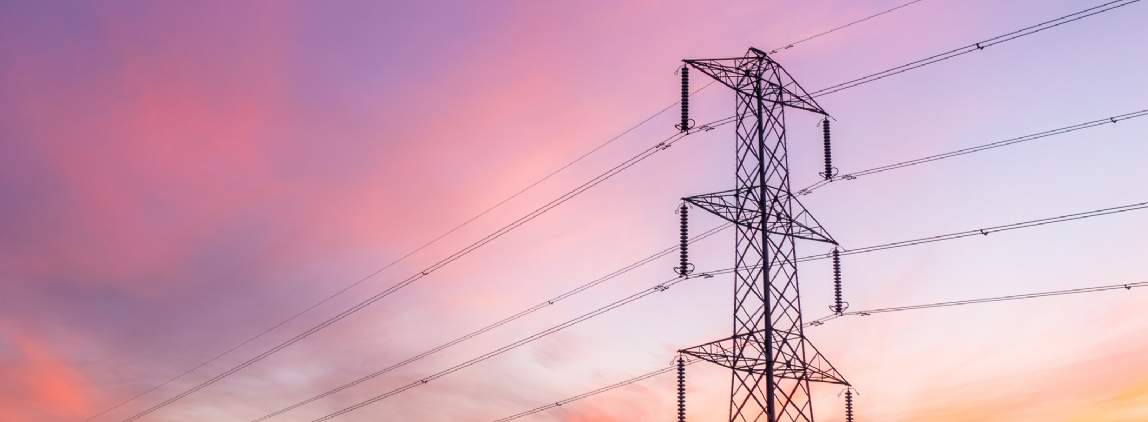The UK Government has committed to decarbonising electricity supply by 2035, however, the Climate Change Committee has highlighted that the government does not have a clear strategy to deliver a decarbonised and resilient grid system that will turn this aspiration into reality.
The scale of the challenge to deliver a modern and resilient adequate network capacity is significant. It will require a fourfold increase in grid infrastructure over what has been delivered in the last 30 years to provide timely and cost effective connection for new clean energy projects.
Two low risk but high reward steps are queue management; significant amounts of grid capacity is held by projects that may never be delivered. Ofgem and National Grid ESO' estimated that up to 8GW of capacity (across 50 projects) could be released if an 'amnesty' of transmission connections was to take place.
The other is skills - investment must be made to develop skills and training to engage the next generation and the role they can play in reducing our impact on the environment.
But delivery of a modern, low cost, green and resilient network is going to require a broad range of solutions. Three areas that have a critical role to play are:
Unlocking hydrogen
Hydrogen has an essential role to play in helping the UK to achieve its net zero ambitions. Its myriad of potential uses has led to a number of proposed projects emerging, with Hydrogen UK detailing 16 major projects. Now we must determine what the economy-wide uses are for hydrogen; notably the role it can play in managing the electrical grid network.
Hydrogen can be used as a form of long-duration energy storage, to allow better balancing of the grid, ‘absorbing’ excess electricity at times of high supply but low demand and releasing it when required. It can be used in this way as an energy store to enable balancing on a short- and long-term basis. The flexibility of hydrogen will enable it to be deployed in an area to deliver multiple solutions, such as electricity, heating and transportation.
Grid modernisation
The scale of the real estate sector’s appetite for growth across all sectors must be matched and exceeded if we are to deliver future-ready places for people to live and work. The need for timely and cost-effective grid connections will not only be a priority for those trying to get power onto the grid, but also for those looking to draw power from it. We need to deliver innovation at a local and regional level with the implementation of independent networks.
The development of ‘smart’ or ‘micro’ grid systems will enable the network to modernise and operate optimally. A microgrid is a localised energy system that operates independently or with the main grid, serving specific areas and integrating renewable energy generation and storage. They can be capable of operating entirely in isolation to the wider grid network or as a way of ensuring resilience and reliability when there may be a power cut on the wider network
A smart grid is an advanced electrical grid that uses digital technology to monitor, control, and manage electricity generation and distribution. It integrates intelligent devices, such as smart meters for real-time data analysis and dynamic response to changing energy demands.
Whilst we are beginning to see the emergence of projects, clear government policy and perhaps financial incentives would kick start further deployment.
Decarbonising heat
The UK still has much to do in decarbonising the electrical system, the challenge to decarbonise the way in which we heat spaces and places is even greater. Achieving a reduction in carbon emissions derived from heat can be tackled from two directions, first through improving the efficiency of new and existing buildings and secondly by using low carbon sources of heat such as heat pumps. If money were no object, achieving this on a property-by-property basis would be straightforward. However, at the centre of the challenge will be affordability. With significant changes in energy, water and waste prices alongside the backdrop of the cost-of-living crisis, consumers want to be able to heat their homes at the lowest cost.
Heat networks are a mature, safe and reliable technology with over 14,000 already operating around the UK that could be converted away from natural gas.
One solution is delivering heat networks to provide more sustainable and low-cost solutions into urban regeneration and new housing developments. However as with smart/micro grids, significant public and private collaboration will be needed to enable projects to be realised. The single biggest challenge will be around the capital costs and the delivery of affordable solutions. Choosing a natural gas boiler remains the most economic and convenient choice but to ensure a greener future we must look to incentive the uptake and deploy these.
To achieve all of this we need collaboration across the public and private sector, government, real estate, utilities and investors if we are truly going to get the UK greener and reach our net zero ambitions.
Further information
Contact Nick Green
Hydrogen distilleries: a template for decarbonising Scotland’s industry

.jpg)







.jpg)
.jpg)